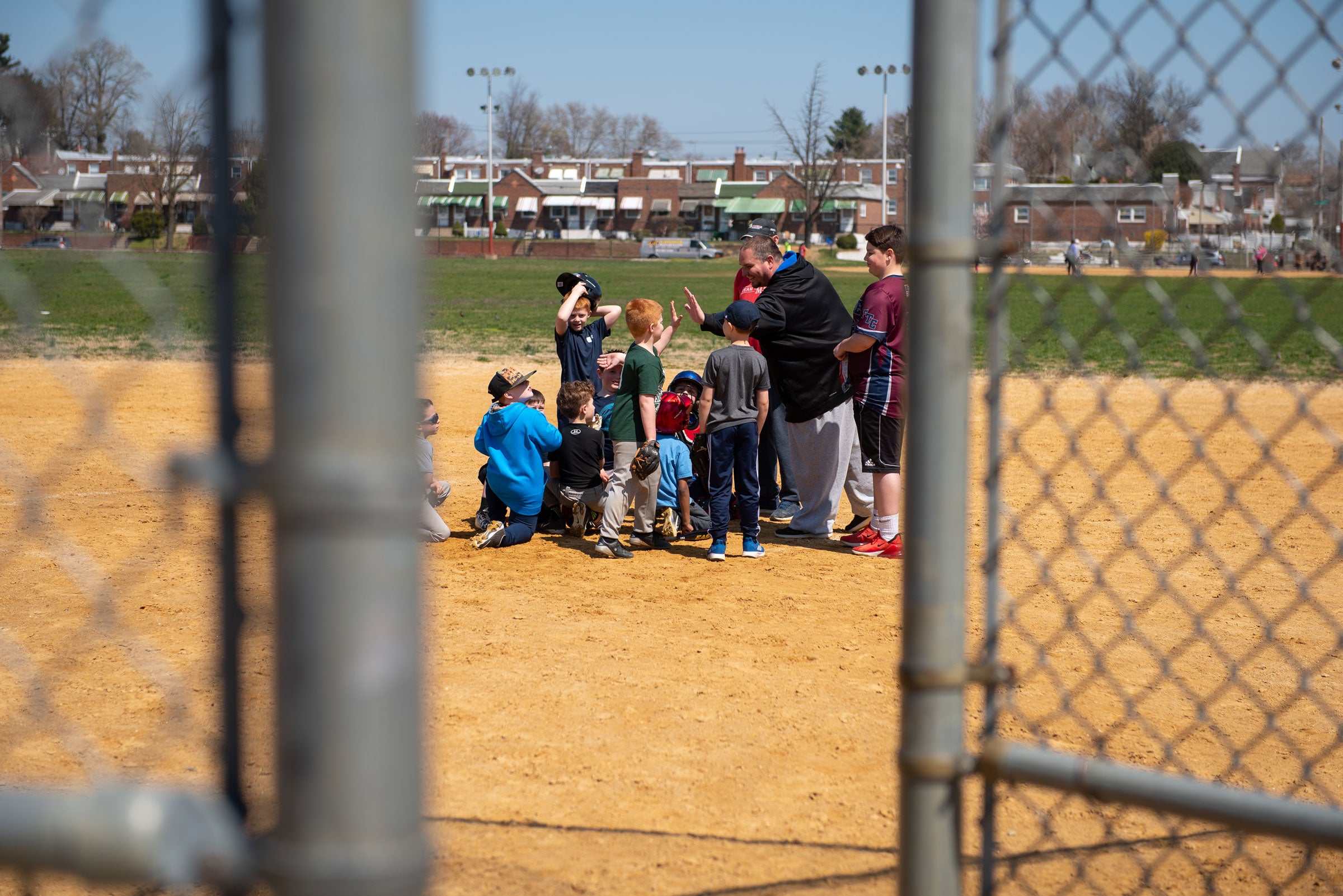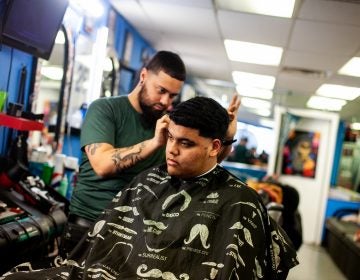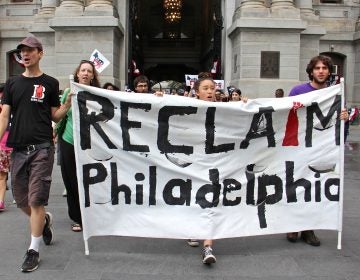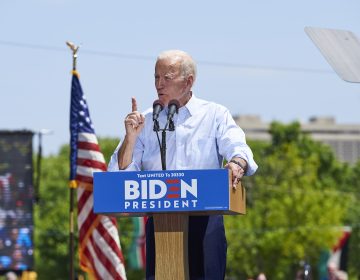Critiquing Kenney: Mayfair residents see neighborhood changes, with City Hall in the backseat
As the Mayfair section of Philadelphia becomes more diverse, residents are united in their hopes for a way of relieving the traffic congestion.
Listen 4:26
A group of boys play a game of basketball at Vogt park in Mayfair on Saturday, April 6, 2019. (Kriston Jae Bethel for WHYY)
To get a sense of how voters are feeling about Jim Kenney’s four years as Philadelphia’s mayor, we sent reporters to several neighborhoods to ask residents what’s changed and what hasn’t since he took office — and how that might affect their vote for mayor in the May 21 primary.
—
Buffered from Frankford Transportation Center by acres of graveyards that once marked the city line, Philadelphia’s Mayfair section lies in the Northeast. The intersection of Cottman and Frankford avenues is the heart of the neighborhood, where cars, buses and trucks are bumper to bumper during rush-hour traffic.
Mark Capriotti is a third-generation produce vendor on Frankford Avenue, just up the street from Cottman. His grandmother started the business in Kensington in the 1930s, and they’ve been in Mayfair since the early 1960s.
A big difference between now and then is that customers don’t have time to walk, he said.
“Only on Saturdays. Because the majority of families here are two-income families, so there is nobody home during the day to walk the avenue. Whereas, in the ‘60s, ‘70s and early ‘80s, the husband worked or it was a one-income family. Now everyone needs two incomes to survive,” he said.
Capriotti, who now lives in South Jersey, said he’s seen several mayors stump outside his family’s business in election years, but not Mayor Jim Kenney.
Instead, those involved with running Mayfair’s Business Improvement District are much more visible. The BID, a nonprofit founded in 2012, has a board of directors that includes indicted City Councilman Bobby Henon.
“The flags on the poles, new lighting, security cameras — all done by the BID. Not the city, the BID,” said Capriotti.
Henon pleaded not guilty to 20 federal counts of bribery and fraud in January.
“I just hope it all works out for him,” said Capriotti, “I’m here from 3 a.m. until the store closes, and I know every crack in the sidewalk. Henon’s done a lot around here.”
Currently, Mayfair’s BID is tackling the traffic on Frankford with concrete bumpouts to slow down cars as they approach pedestrian intersections. It’s looking at reducing car traffic to one lane.
Voter after voter described Kenney as likeable, in general, but most said they don’t have a strong connection to him. They feel the mayor’s office is a bit too removed to have a big impact.
Henon, along with Kenney, recently announced an $800,000 renovation for Moss Playground in nearby Wissinoming, to be funded by the controversial tax on sweetened beverages.
But traffic flowing through the neighborhood remains a uniting gripe for residents including America Lopez, a manager at VMC Thrift store next door to Capriotti’s Produce. She’s concerned that Cottman, Aramingo and other roads that funnel traffic from Interstate 95 are pushing more commuters and pollution into the neighborhood. The perennial renovations of I-95 seem to be making things worse. Lopez said..
“You see the work they’re doing on Aramingo now through [Betsy Ross Bridge] — and now they want to do bridges across,” she said. “That’s a lot of traffic, and that’s a lot of noise and investment and time. Why didn’t they figure this out years ago?”

Changes and diversity come to Mayfair
At Vogt Playground, Julia Griffenkranz watches her 8-year-old son Benjamin at baseball practice. Saying she’s also has noticed more improvements made by the BID than by the city, she said Mayfair seems removed from the influence of City Hall.
“I think there could be more resources here,” she said. “Years ago, a local politician was saying that the equipment at Roosevelt Playground was going to be redone, but that never happened,” she said.
She relies on the Market Frankford El and the 66 bus to get to her finance job in Center City. But her husband needs a car to get to his job in New Jersey, and traffic is a daily concern.
“Most people around here, I feel, do have a car. Because it’s so residential up here, it’s not necessarily the easiest to take a bus to the grocery store,” said Griffenkranz. “If I lived in Center City, my transportation budget would be much smaller.”
Benjamin has a bunch of friends who live nearby, and she feels safe letting him roam their neighborhood. That is, except for one intersection that’s off limits.
“There’s been a few accidents there so all the kids know not to go near the intersection,” she said.
Mayfair, home to about 40,000 residents, has remained largely a working-class neighborhood. Culturally, it’s in transition. When Capriotti Produce started, the store catered to mostly Italian and Irish families. Now shoppers are more likely to speak Chinese or Spanish, and have brought with them new tastes for produce.
“We used to sell a box of avocados a week, now we sell 10 boxes a day of avocados,” said Capriotti.
They store stocks three varieties of sweet potato to keep up with new demand.
“Chayote, yucca, plantains — we never used to sell these items before,” he said.
Mayfair often feels like the suburbs, but Griffenkrantz said her new neighbors makes it seem that much closer to Philly.
“It’s definitely been a changeover — our block has a lot of diversity in it now. You know, a couple of Muslim families, some Hispanic families, some African American families. It’s nice, you know, I think it’s more representative of the city,” she said.
WHYY is your source for fact-based, in-depth journalism and information. As a nonprofit organization, we rely on financial support from readers like you. Please give today.






